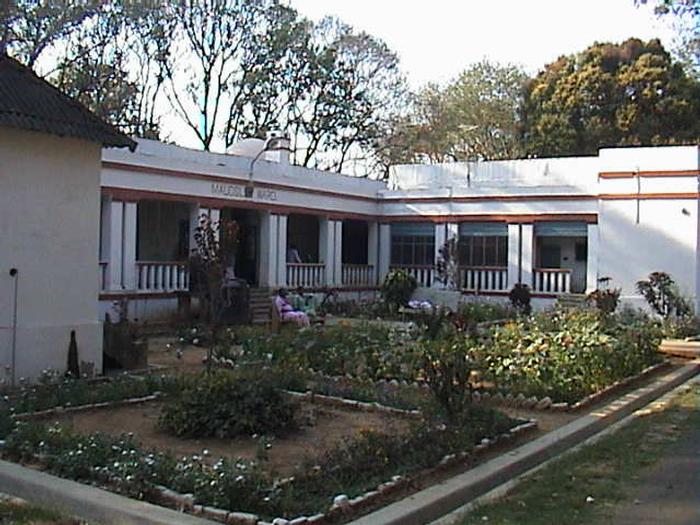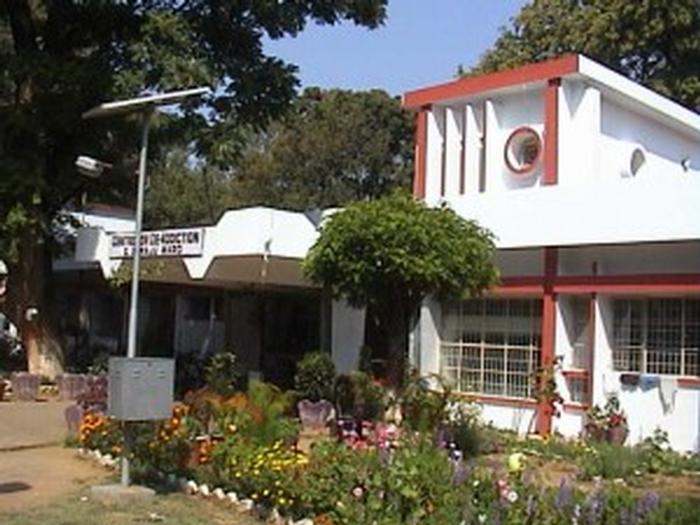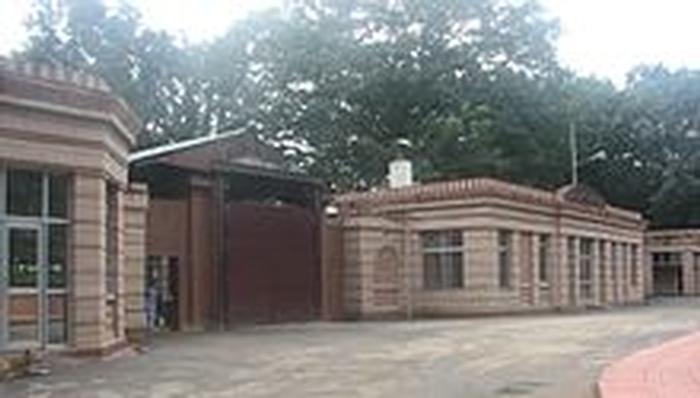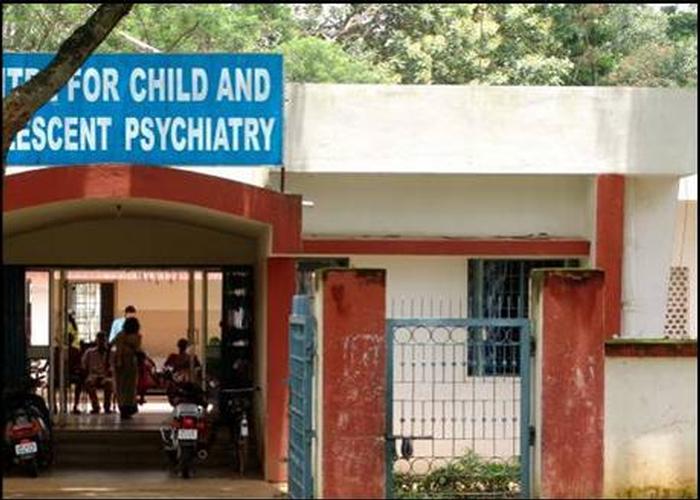[ID:219] The Ranchi 'pagalkhana'....garden of the frenetic.India “A man can no more diminish God’s glory by refusing to worship Him than a lunatic can put out the sun by scribbling the word ‘darkness’ on the walls of his cell” – C.S.Lewis.
The dirty pavement to sleep on, and a few tattered pieces of cloth along with some shredded old Bengali movie poster to cover himself with, are the only belongings he has. Shivering in the cold nights and stolid through the day, he rarely stirs from his haven on the pavement in front of my apartment building at Kolkata. Then there is that old lady, shouting out gibberish nothings and running from one side of the wide road to the other, even amidst the dangerously moving traffic. The list seems never ending, as a person with degraded mental health is still a taboo for not only the entire society, but also their immediate family members who morbidly turn them out of their lives.
Cut to Central Institute of Psychiatry, Ranchi, India, (C.I.P.) or the ‘Ranchi pagalkhana’ as it commonly called; the story seems completely different for the ones extradited above, it is not a banishment from their home but a new habitat, just for them – ‘the lunatics’. Last time, when I was writing the essay proposal, my rather knowledgeable peers were sarcastically plotting to leave me at C.I.P for the exchange of a mere Rs.500, but I was rather flustered seeing this times reaction. Some others said, “That place still exists? Are you sure? We thought it has already closed down or something.” Nonetheless, with firm belief in my heart, to finish what I had started, I set out towards the Central Institute of Psychiatry, situated on one side of Ranchi, 11.4 kms from the Main road.
Numerous 'lunatic asylums' were built in India during the British Raj, to cater to European patients suffering the plight of World War I. They were literally caged like animals, in secluded unhygienic conditions without any facilities to fulfill even their basic needs. The situation was ravaging and, the authorities decided to step up and take action. The Ranchi European Lunatic Asylum was thus built at Kanke in 1918 as the cognitive solution, by the then architects of the British Raj. Since then it has changed its name several times, with repeated improvement in its services, from European Mental Hospital in 1922, to Central Institute of Psychiatry in 1977 (when it was at last raised to the bar of an institute). Over the course of decades, the Central Institute of Psychiatry, Ranchi has evolved as one of the best of its kind in Asia today with many firsts to its credit, in treatment methodologies, technological advancements, research areas, etc. As Berkeley-Hill, the first superintendent of the then Ranchi European Lunatic Asylum wrote, "The miserable bear-garden I had taken charge of in October 1919, had become the finest mental hospital in Asia, and a great deal finer than many in Europe." And now I was headed towards this vacillate world that has become coup de grace for many all over India. It is like a ‘jinchuriki’ popularized by animes like Naruto – you have it, you need it, you boast of it, but you do not want it.
As my auto rickshaw wound through the crowded roads of Ranchi, anticipation was flooding my mind, as I did not know what to expect of C.I.P. After crossing the RINPAS campus on Kanke road, the vehicle finally turned right, taking the path towards my destination. Though the main C.I.P. campus is a square plot of walled land sprawling over an area of around 90 acres, it is actually spread over 210 acres. As I moved ahead a few small houses came into view, which have been made for living purposes of the resident medical practitioners of the institute. Next, the Government High School on the left was a rather old looking, yellowish orange coloured building. Time has rendered uncouth black patches and cracks on its ribbed façade, egg-crate windows as fenestrations.
This view is soon changed by the inalienable charm of snow white British colonial style buildings. Henceforth, the architectural genre remains rather humdrum, with a small fraction of exceptions due to the newly built structures. To the right is a two storeyed pure white coloured building complete, with an arched façade, rose windows, etc. it is surrounded by a wall and its beautifully ornamented main gate with ‘C.I.P. Ranchi’ welded on it, opens into a path adjoining a small garden in front. This, as I later found out is the administrative building of the institute, but ironically I felt that it resembled those small British barrack building sets, I had seen on television in patriotic movies and serials. After this the focus again shifts to the left, where one after another are situated the C.I.P. guest house and the girl’s hostel (used for lodging by the girl students of the institute training centre). Both these structures are protected with high walls and barbed wires. The design of these buildings is rather simplistic institutional, with white walls, ribbed elevation, and jaalis at strategic positions. Right then my ride dropped me off at a triangular bay in the road, leading up to the main campus. The alluring and pulchritudinous garden within the rotary at the bay is christened ‘chaman’ – a hindi word for flower garden. Its landscaping is done in a stepped fashion and provides ample opportunity for students and visitors to sit, and indulge in various other activities. To the left of this triangular rotary is a vast expanse of land, teaming with people, comprising relatives of patients, staff members, and ‘thelawalas’ (hawkers trading food items on two wheeled hand pushed carts). Though parking is prohibited in this spot, as dictated by a signage, it is rampant on the grounds in a random whim. In one corner of this field stands a cubicle, plain, white structure, which consists of the waiting hall for the outpatient department as well as six doctor’s chambers. Opposite the OPD is the emergency and official section. The emergency department is pretty conspicuous, even from a distance. That belt also contains all necessary amenities for the visitors, like public toilets, sitting space, ATM, two wheeler and four wheeler parking space, etc. The structure is trademark white with the tapering ribbed elevation highlighted with dark green colour. Unfortunately, its façade is pockmarked with ‘pan’ (betel leaf) spit. My anxiety had not subsided yet, as I saw a patient becoming frantic about why nobody is hurrying up, while an old lady was absorbed in her own world – talking with herself. Right then I was welcomed into their instauration, when a patient suddenly stopped in front of me, flashed a big smile and said “namaste sister”, in a sing-song voice. A fortuity probably, but reason enough for me to feel the warmth of the greeting and be at ease.
I went ahead to explore the rest of the unseen world of these frenetics with new enthusiasm. The main gate is dark maroon coloured, but relatively elementary, and the high surrounding wall in continuation is a majestic granite and marble clad structure, the humongous visage of which almost resembling the high guarding walls of a fortress. Two fully functional rooms are present on each side of the gate, one for the administrator and the other for the director of the institute. As I stood facing the entrance I was overwhelmed by the dense mass of very tall trees standing upright with their head held high, as if proud to be part of this condescending pose. I entered through the small gate which was meant for public entry, while the big double paneled gate beside was kept only for vehicular entry.
‘Red’ – a colour with various implications world over. While it is the vibrant, important and lucky colour of Indian festivities, on the other hand it is the face of danger. It is the gleam of endlessly streaming blood in our bodies, and at the same time a road signage to stop. Emotionally red is associated with guilt, sin, passion and anger. Amongst every interpretation red is the very colour of the uniforms of the patients of the Central Institute of Psychiatry, Ranchi. Thus as I entered, the presence of the patients was discernible from the rest of the people within, though they themselves were probably unaware of it all. They were everywhere, sometimes alone and sometimes in groups of two or more. I approached one of them and asked him if he liked the place, I do not know if he understood me, but his reply came in the form of him circling me chanting something illegible all the time, until one of the guards helped him on towards his ward. In some inexplicable way I felt that he was happy here in his own way.
To the immediate right of the entrance was marked a separate entry to the female wards. In total there are six wards for female patients. These wards are designed in British colonial style of architecture, painted white with red highlights. The entrance to the rooms in the various wards is through the landscaped courtyard and up a verandah. Beds, chairs and such other amenities are provided judiciously in the different rooms for the use of the residents there. Similar is the case with the nine male wards located towards the rare of the campus – rooms opening onto verandahs and verandahs in turn opening onto courtyards, made pleasing by adorning them with small flower gardens and wards at same distance from each other. All wards are only one floor high. Though the male and female wards are synonymous design wise they are separated by distance and a high wall, to maintain safety. It seems as though the architects had strived to create a quaint little private world for the patients of each ward. This in itself has proved to be a very effective means of treatment, as it soothes their nerves and helps the patients settle down in this new environment. In lue of the matter one family unit has also been provided in the compound. The design is essentially climate responsive, as Ranchi experiences hot and dry climatic conditions. The total bed capacity combining all the wards is 643, while every year more than 3000 patients visit C.I.P. looking for treatment of their woes. Each ward is named after eminent and world renown psychiatrists of both Indian and European origin, for example – the Maudsley ward, the Conolly ward, etc.
The Central Institute of Psychiatry was never a custodial facility, and therein lies the crux of the secret behind the excellence of this institute. The staff recognizes the vulnerability of patients during their inpatient stay. To asses and diagnose their state of mind, focus is kept on stabilizing the patient, and planning short-and long-term treatments for the patient's psychological, social, and physiological problems. Before a patient is discharged from the inpatient unit, every effort is made to coordinate with the patient‘s family and the referring professional on the patient's continuing outpatient care to ensure speedy recovery and wellbeing of the patient. This contact and coordination is considered crucial to the success of treatment. In resonance with a wide range of psychiatric problems, the expert, multidisciplinary staff includes professionals from a vast range of health care disciplines. Even the nurses are experienced in managing severely disturbed psychiatric patients and with psychological interventions for special populations, such as the distraught elderly, substance abusers or adolescent issues. Apart from clinical methods such as pharmacotherapy, electroconvulsive therapy, psychotherapies, family interventions, yoga, daily physical exercise, reading of books in the large central library, etc, patients are constantly encouraged to heal in a natural environment. Large portions of the site are left empty and the patients allowed to wonder free, as if in their own realm of a parallel universe, nurtured and healed by nature, under the dense canopies of the numerous, heighted trees. I felt overwhelmed at the order and discipline, as well as freedom and liberty of the abode called C.I.P., Ranchi – the conflict in harmony.
The disparate many departments are situated to the left of the main gate. These include the likes of Centre for neuroimaging, Child and adolescent psychiatric unit, Centre for de-addiction, Centre for rehabilitation, Psychological unit, etc. The new department buildings break away from the colonial style of architecture of the old ones, as massing and vibrant shades of yellow are used in their façade design. Even so, all the structures have one thing in common, the gorgeously executed flower beds surrounding them and lining their approach path. A training and research centre is also an important part of the main campus, where students from far and wide come to learn the nuances of mental health in a premier institute, such as it is. The kitchen, patient dining hall, staff dining hall, mineral water plant, are all situated in the exact centre of the site.
In a BBC survey it was once found that one in every four people has some sort of mental or emotional health problem. Another study conducted by the Indian Council of Medical Research found that as many as 35000 to 40000 cases of mental illness come up even in metro cities like Kolkata, Mumbai, etc. Even so we rather focus on keeping a tab over mortality rather than morbidity or dysfunction. Though the plight is so great, the apt amount of resources and services needed seem to be lacking in many areas. In most developing countries, care programmes for the individuals with mental and behavioral problems have a low priority. Provision of treatment and care for the same is limited to a small number of institutions usually overcrowded and under staffed. Over past several decades, the model of mental health care has changed from the institutionalization of individuals suffering from mental disorders to a community care approach. The mental health research programmes of the council have played important role in this shifting paradigm. There seem to be epiphanies of new emerging hopes therefore.
The Central Institute of Psychiatry is one such hope waiting to be further cultivated into a healthy and wholesome crop. More than often, 'normal people' have a negative dogmatic approach towards C.I.P. and the mentally ill. Even though Ranchi is revered for the presence of C.I.P. world over, it is ignored rather than being considered a blessing. If the government and the people work hand in hand to maintain, uplift and popularize such an institution of historic importance, the heartbreaking situation of mental health in the country can be resolved. This institute is a burning example that should be followed into creating many other such institutes and increasing awareness among the mass, to paint the picture of a better and healthy society for the future of Inida.
References:- 1.Article on Central Institute of Psychiatry: A tradition in excellence, by - S. Haque Nizamie, Nishant Goyal, Mohammad Ziaul Haq, and Sayeed Akhtar of C.I.P. Ranchi. 2.http://www.cipranchi.nic.in/ 3.http://en.wikipedia.org/wiki/Central_Institute_of_Psychiatry 4.http://www.bbc.co.uk/health/emotional_health/mental_health/ 5.Journal of mental health research in India by the Indian Council of Medical Research, India.
If you would like to contact this author, please send a request to info@berkeleyprize.org. |




